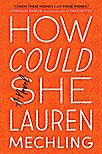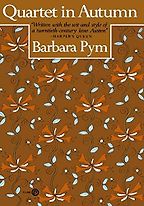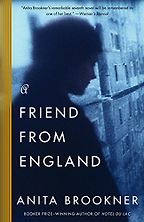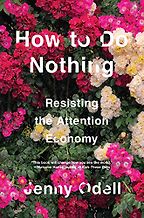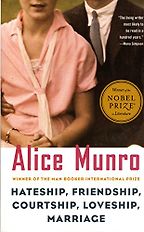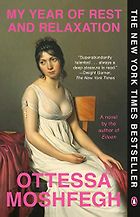So, you’ve picked five books on friendship. What was your methodology for choosing this selection?
At first, the selection came really quickly to me, without much rhyme or reason for my choices. But in looking at it, I feel like there’s a bit of a pattern. It’s a little interesting and a little troubling, in that it’s a depressing and lonely group of books!
But you read lists and magazines with headlines like ‘Our top friendship novels!’ and usually it’s like Sex and the City with half as many characters: it’s either books about pairs of women or Thelma & Louise stories. There’s a lot of affirmation and mutual empowerment going on. My selections reflect my particular obsessions with friendship, which tend to be its darker underpinnings. I wanted to present books that would be surprising—that would perhaps open windows for people or help them think about friendship a little differently.
What makes a good novel about friendship? There are so many novels of human relationships, or that feature a dominant romance or friendship running through them. Zadie Smith’s NW, which orbits around a friendship of two women as they grow up and become adults, comes to mind.
It’s funny—I love that book, but I don’t think of it as a bull’s-eye friendship novel. To me, it’s more like two parallel stories: two women who had an intense connection, each of whom is running on their own tracks throughout the book. NW isn’t as much about their interactions with each other as it is the impressions they made on each other.
For me, a good friendship novel is not totally cuddly. In an ideal world, it opens my eyes to a dynamic that hits me straight and feels familiar, but which I hadn’t been able to articulate to myself before. I’m also interested in the changing geometries of dynamics. I love a friendship triangle, or a seesaw between two people where there are shifts in momentum. I like power dynamics that can be blown up from the inside. We all understand what the glossy, good side of friendship is. But as a subject, I don’t think friendship gets its due in terms of its depth, its complications, and the ramifications it can have on our lives and our sense of who we are.
You’ve just written a novel that features a friendship triangle. Can you tell us a bit about it?
My book is about the trouble of female friendship. Over the course of a hopefully fun-to-read, fast-moving novel, I try to articulate these formerly unspeakable dynamics, and the feelings that women experience in relationships with other women. Especially with the effect of time. In one way friendship is impossible, because once a dynamic has been sorted out—and is agreeable to both parties, let’s say—then time happens. Circumstances change, and a whole new set of realities come into play. It’s very difficult to keep up with changes all around us and keep a friendship. To set up every friendship so that it will continue to nourish both people.
The main storyline of How Could She takes place from New Year’s to New Year’s over the course of 2017. In it, there are three women who once upon a time were true peers, growing up together as young women. Through so much exposure to one another during this very pivotal period in self-definition, they became really important to each other. A little more than a decade later, they’re still intertwined, but they’ve all landed at very different stations in life. And it’s very difficult to navigate this or even speak about it. I don’t know anyone I’m friends with who’ll say, ‘It’s very hard for me that this good thing is happening to you’, but I’m sure people feel it. I’m not proud of my internal monologue, but I feel it, too. It’s impossible not to measure yourself against your friends.
And that’s what these women do. But that’s what animates the novel. They all have a very important, exciting year; things change; they all make crazy decisions. There’re rises and falls. It’s driven by their feelings about one another and their compulsion to prove something to themselves or the world. To defy other people’s expectations of them.
That sounds so compelling. Beginning with your book choices, let’s start with Ottessa Moshfegh’s My Year of Rest and Relaxation. I love this book. It’s unlike anything I’ve ever read.
It’s funny, because that’s such a dark book, but it’s actually the lightest of the five. The friendship in it is very sweet, actually: it’s about two women, one of whom doesn’t have a name, and her best friend, Reva. They’re both brilliant comic characters, but Reva really lived on with me. Ottessa Moshfegh has this ability to say so much with little spiky details that linger. Though I read it over a year ago, I just vividly remember Reva, glugging Diet 7-Up, obsessed with her fake Gucci purses, or going to Pilates and talking about her nights going out to gay bars in the West Village. She’s just this hilarious creature of a moment: the basic girl from 2000.
But she’s actually the only source of love in the novel. She cares and worries for the narrator. In fact, the most poignant, life-changing moment in the book at the very end is about Reva. She’s a character who all along has had a comic element to her, so I was surprised by how profound the ending to do with her fate was. It’s what happens to Reva that ends our narrator’s stretch of total self-destruction.
“My Year of Rest and Relaxation is the anti-wellness manifesto”
I read it as a rebuke to our culture of wellness, which was so refreshing. It’s the anti-wellness manifesto: this woman is basically poisoning herself every hour of the day with all sorts of pharmaceuticals. Coming from a culture where everyone is glugging turmeric juice and matcha powders and charcoal, reading about this woman who’s hilariously, greedily downing her medications—as much as she can get from the one other person in the book she talks to, her horrible psychiatrist, who’ll give her absolutely anything under the sun—was just great.
When I told a friend of mine that you’d picked this, she said that when it first came out, she mentioned it to her Upper West Side therapist, who just groaned and said something like, ‘You’re like the seventh person this week to come in destroyed by and needing to discuss this book.’ Which I thought was just hilarious.
That is hilarious. I wonder if the therapist went into this place of defensiveness—‘We actually don’t do that! Why is she depicting us as these thoughtless monsters?’
We also only see Reva through the narrator’s eyes; her kindness is often warped by the perspective of someone who is really sick and often cruel, right?
But the book itself is so prickly and so deranged, and that’s the only culture or environment in which a character like Reva could survive in a way that pleases me. If Reva were dropped into any other book that was a little more earnest or full of heart, she’d probably really annoy me, or I would’ve thought her more two-dimensional. But instead, there’s a contrast: Reva is this night-clubbing, narcissistic bulimic who’s actually really devoted to her friend.
The narrator isn’t necessarily a bad friend to Reva. She’s a very ill person; she’s a bad friend to herself, mostly. (Though she’s a good friend to herself by being friends with Reva). But Reva is a saint for putting up with this person, who won’t even accompany her anywhere. The narrator is a drag; it’s all about her problems. Reva has to operate in the world friendlessly, because her best friend is lying on the couch in a stupor for most of the book.
In a way, Reva is her carer. It’s not entirely one-sided, but it’s close.
It’s very off-balance, which is really interesting. That element of a friendship fascinates me: sometimes the dynamic isn’t the thing that suddenly changes, but rather it’s one person’s attitude. Something that’s been simmering, something that’s been the status quo, will suddenly prompt one person to disrupt the ecosystem of a friendship and say ‘I can’t do this anymore.’
Whereas in another kind of novel, some actual plot action would have to create that kind of disruption—so it’s really intriguing that novels about friendship can have that slow simmer. Next, you picked Barbara Pym, Quartet in Autumn.
I would pick her for any list. I named my daughter (Louisa Pym) after her! I love Barbara Pym. From the moment I found her, she has not left that special place on my bookshelf.
I press her into the hands of younger women and most have not read her. So many people who work in the world of literature, and who love humorous, poignant writing, still haven’t gotten to her yet. But that’s part of the beauty of Pym—she was so overlooked and so marginalized, and that’s why she’s able to write about that kind of character.
What is her novel of social manners like, for someone who’s never read her?
It’s many-layered. She’s known for writing about lonely women who have romantic fantasies about clergymen. They have jumble sales, live in small villages and survey each other for gossip as if bird-watching. There’s a very suppressed interiority in Barbara Pym: people are well-behaved, repressed, very English, and not generous with themselves. There’s always a scrimping and saving element, an emphasis on what would be suitable and not being extravagant or showy. But for me the real pleasure of Pym is less about the set dressing of her world—which I do adore—but her flavor, her point of view. Which is unsparing and melancholic, but a little twisted.
The novel you chose is definitely on the darker side, for Pym.
I re-read Quartet in Autumn a month ago. It’s a strange novel to re-read with much time in-between. The first time I read it, I thought it was a hoot. It was published in 1977, but it has this late 60s, early 70s flavor to it—this chartreuse aesthetic. It’s about four people who don’t feel comfortable in a changing, groovy London. They work together in an office. One thing I love about it is that it’s never made clear what they do. All that’s clear is that they’re completely marginalized. It seems like their colleagues put up with them, are waiting to get rid of them, and maybe give them little fake tasks. You get the sense from the book that there’s actual industry happening, but these four are not a part of it. [Laughs.] It’s a little like The Breakfast Club; there are these four losers who are united by virtue of that.
“The real pleasure of Pym is less about the set dressing of her world—which I do adore—but her flavor, her point of view”
When reading it for the first time, I thought it was the weirdest book of hers. Because it is weird. It moves out of cottage country: now we’re in London, and you get the sense of a more modern society creeping in on Pym-land. There’s a less jolly spirit. It feels more deranged and more tragic in a very appealing way. But little details stuck with me. There’s one character who has this strange compulsion to not recycle her milk bottles; instead, she hoards them in a shed, or sometimes she hides them on a bookshelf in a library. And she also obsessively collects brochures for holidays she’s not going to go on.
But re-reading it a month ago, I was horrified. Because it’s brutal and it’s so sad. Really, it’s a book about mortality—about the world truly having no need for you. I’m also interested in the idea of the context-based friendship: the deep connection that can form between people simply because they’re sharing some experience together. Nothing otherwise would’ve drawn these four characters—Marcia, Letty, Norman and Edwin—together, but they’re in the same boat, in the same strange office, and they come, albeit not in a warm, cuddly way, to be each other’s family. They’re each other’s only human connection.
Despite this sustained proximity, throughout the novel their boundaries never really let up with each other. It’s so delicious but so painful. It’s something I don’t relate to—that’s not how I am—but you get the sense, watching these people, that in a way they’re spying on each other. There’s a tenderness; they worry about each other, but they wouldn’t really dare say much to each other. A character won’t openly express her thoughts about the other person’s life choices, but they will obsess over them.
They’re observing each other’s loneliness, in a way.
Absolutely. There’s this one line: “It was a comfortable enough life, if a little sterile, perhaps even deprived. But deprivation implied once having had something to be deprived of, like Marcia’s breast, to give a practical example, and Letty had never really had anything much. Yet, she sometimes wondered, might not the experience of ‘not having’ be regarded as something with its own validity?” It’s at once tender and brutal and subtle. Classic Barbara Pym.
I love that line. I also found it really interesting that in this book and the others you’ve picked, the individuals in these friendships are themselves very, very much alone and often lonely. They live alone, or they’re single or older or somehow estranged.
Yes. That’s of course the case in Ottessa Moshfegh’s book. And A Friend From England features a classic Brookner heroine. Even the character in Alice Munro’s ‘Nettles’ is sort of a loner; she keeps losing her relationships.
Speaking of A Friend From England, do you want to tell us a little bit about Anita Brooker and her novels?
I feel like each book of Brookner’s is a continuation. She’s created this world with her novels. I haven’t read them all, but I’ve read several, and it’s like they’re part of a family. There’s very little dialogue and there’s a very rich texture to the prose. The prose itself is why I return to Brookner again and again. How to describe her prose? It’s sophisticated and a little musty. She’s known for writing about spinsters, or about women who are not in possession of the brass rings that maybe those around them have come to get. They’re outsiders, and often very curious observers.
Five Books interviews are expensive to produce. If you're enjoying this interview, please support us by donating a small amount.
There’s something both calming and disturbing about her writing that brings me back over and over. And I love that she didn’t start writing novels until she was 53. I won’t call her a late bloomer, because up until then she had a full career as a historian of art. But she was a late adopter of a new métier, and she’s a master. She was a consistent writer, too; I think she wrote a book every year for much of her career. When she got older, she started slowing down—maybe one every two years. [Laughs.] But really, she was on fire.
Why did you choose A Friend from England?
I chose it because this book feels less lonely to me than the others of hers I’ve read. I also love this particular trope: a mismatch pairing of two women not naturally destined to be friends, and at different stations in life. One of them is a little more pitiful than the other, perhaps, and one of them is a little more glamorous. Other books like it include What Was She Thinking?: Notes on a Scandal by Zoe Heller, or The Woman Upstairs by Claire Messud.
A Friend From England is also more suspenseful and plotty than some of her books. It’s told from the point of view of a 32-year-old woman named Rachel, who’s essentially been chosen by 27-year-old Heather’s parents to be Heather’s friend and look after her and keep her company and make sure she’s okay. So there’s an obsession in this book with meddling concern. In a way, it’s crazy that Rachel and Heather have nothing in common. They have no past together. There’s no attraction. There’s no glue of a friendship. It’s simply this bond of duty—it’s a strange friendship where all the other elements are boiled away. That’s the focus: this attachment that’s based on a sense of obligation.
“How to describe Brookner’s prose? It’s sophisticated and a little musty.”
Really, it’s Rachel who’s trying to take hold of Heather’s life. She thinks she knows what’s right for Heather, and actually becomes a little untethered over the course of the novel. At the beginning, she’s very tolerant, maybe a little judgmental, and there’s a distance between the two of them in their companionship. By the end, we have Rachel travelling across the world to track down this woman and trying to shake her out of her life choices. The most amazing scene is at the end, where suddenly the distance between the two melts away and Rachel’s obsession with Heather is just thrown back in her own face. She sees herself completely differently, in a way that’s incredibly painful. There’s a lot in this book about knowledge, and not sharing knowledge. There aren’t very many characters, but there are definitely discrepancies among them about who knows what, and who has observed what about each other—all to varying degrees measuring the happiness of other people.
Get the weekly Five Books newsletter
In the end, the one person who has felt like she’s essentially drafted the shape of her own life is Rachel: she’s the outsider; she’s orphaned. She’s not part of this prosperous family where there’s always a sense of warmth, food and happiness surrounding them. She’s always circled around them, happy enough to get a taste of it when she comes to visit but resigned to being single. She’s not one of those women who becomes all atwitter about marriage or weddings; she holds men off at a distance. She’s engineered this life as a lonely woman, and there’s a sense of total self-deception, of explosion of self-awareness, at the very end that has absolutely nothing to do with Heather. And it boomerangs right back at our narrator’s self-consciousness.
At first, it feels like Rachel is so different from them; she’s fearlessly independent and principled about her loneliness.
She says at one point, “I had been softened and amused by the solemnity with which they had accepted all the farrago of romantic passion. For to me it was a farrago, both on the stage and in real life, something archaic and unmanageable, unsettling and devastating, and to succumb to such a passion would be a quite voluntary step towards self-destruction.”
Right. There and elsewhere, even if indirectly, her attitude seems like a withering critique of what we might think of as ordinary people: those cocooned by the emotional shells of community and supportive family—which could be painful for almost anyone to read. But by the end it seems to rebound in Rachel’s face, too. It’s just … grim.
Yes. Her worst possible path, or destiny, just flashes in her face. It almost feels like she just as suddenly shoots right to her death. Rachel feels throughout the book that she’s given herself space and liberty. She doesn’t have to put up with nonsense the way other people do, the nonsense of connection with other people. At the end, she’s essentially completely cut off from the family. But she’s not just back to being alone: she’s alone with her demons.
Do you hear a bit of Brookner in that? She was once quoted as saying “I have said that I am one of the loneliest women in London.”
In one sense, yes: she was the chain-smoking, cat-loving spinster. There’s obviously a reason people lump Brookner herself with the Brookner heroine. But my sense of Brookner is that she was more pleased in life, and that she was fascinated by the characters she wrote about.
In another quote, she says:
I am interested in people who live on their own, people who get left behind, who drop through the net, but who survive. They seem to me quite heroic characters sometimes, but no one inquires about them because they’re people who do without much conversation, whose loudest moments are internal. If such characters persist through my novels that’s because I don’t know much about them, not because I know them too well. I write to find out what makes them tick.
And I’m not sure she feels like she was one of those people. It’s like the way Mike Leigh’s films are so great for the same reason: he doesn’t look at the winners. Brookner says she holds these women in very high esteem because she sees them as fierce warriors. There’s something very admirable about the day-to-day survival of a Brookner heroine.
Speaking of admirable, your next choice is How To Do Nothing: Resisting the Attention Economy by Jenny Odell. This is very different from your other selections. Why did you pick it?
Totally different. I chose it for a very autobiographical reason: a very good friend of mine put the book in my hands recently, and it was the greatest act of friendship. The book itself is a manifesto of how to be a good friend to yourself.
Odell writes about opening up to a new kind of experience: the experience being not having your nose pressed into your phone, and how fascinating the world around you is if you actually tap into it. As someone who’s constantly wired in—I do not want to tell you my screen-time hours; it’s terrible—the weird but fascinating thing about reading this book was the purifying element of it. Now I’m back on the internet, having read this book—and keeping it in mind—I find myself feeling less addled. I feel a little more zen, a little more grounded.
In a way, it’s an indictment against living on Twitter. She talks about Twitter being a very out-of-context ecosystem:
Compared to the algorithms that recommend friends to us based on instrumental qualities—things we like, things we’ve bought, friends in common—geographical proximity is different, placing us near people we have no “obvious” instrumental reason to care about.
On the internet, everyone is so isolated. There isn’t much nuanced connection, or a sense of a community coming together and figuring out how to solve a problem or enjoy themselves together. There’s a pervading alienation.
A bit like the Pym novel, it’s people observing each other’s loneliness.
Right. And she talks about the natural order of things: how people, especially after a disaster like an earthquake or something, are suddenly forced to scramble and help each other:
Not only did these neighbors organize and provide each other with food, water, shelter, medical aid, and moral support—often crossing social boundaries or upending norms in order to do so—but these local, flexible, and rhizomatic networks often got the job done better, or at least faster, than the more institutional aid that followed.
She’s talking about this democratic, criss-crossing world where there is no hierarchy; this deep, multi-connected world where things aren’t just essentially like Twitter—which, if you look at it, is a bit like blocks of different people basically yelling. Odell writes: “the platforms that we use to communicate with each other do not encourage listening. Instead they reward shouting and oversimple reaction: of having a ‘take’ after having read a single headline.” These people are not talking to each other, really—or rather, there’s no correlation among the different “takes” you’re seeing. As an internet addict, I go back and forth between to trying to be offline a bit more, but since reading How To Do Nothing I’m also just not feeling as wound up in it as I was.
“Odell writes about opening up to a new kind of experience: the experience being not having your nose pressed into your phone”
It’s also just incredibly smart: it’s a lot about conceptual art, philosophy, and activists in California. It’s a very interesting patchwork quilt of a book. It’s not a self-help book that shames people about the effects of the internet on our brains. Odell’s interests do not overlap with mine, and nevertheless I was fascinated to hear her tell me about, for example, the longshoremen in San Francisco in the 1920s and 30s and how their union, the International Longshoremen’s Association, was built up.
I don’t even know the name of the tree outside my building in Brooklyn, but Odell is really interested in looking at and classifying nature. Since reading it, I’ve stopped now and then outside my building and just tried the experiment of looking at a bunch of leaves sprouting out of it in the sidewalk. I’ll notice, say, a beautiful formation of ants moving around. I’ll stare at it for a little bit and think, ‘Life isn’t boring—you just have to get better at living it.’
I could definitely do with some of that.
It’s very good, and very well-written. That’s the thing—it’s really satisfying. As someone who 99% of the time reads novels, I thought this book would be good for me, but in fact it was a pleasure. I only underline the heck out of books when I’m assigned to review them. But when I read this on my own steam, still I couldn’t stop underlining. It was a way of acknowledging to myself what resonated with me. It wasn’t for coming back to later so much as it was a way of high-fiving Odell along the way.
Last, you picked a particular story, ‘Nettles’ in Alice Munro’s collection Hateship, Friendship, Courtship, Loveship, Marriage. Tell us a bit about this story—it’s so unusual right from the off; the first page is in something like three different time-zones.
I feel like any Alice Munro story is a horrid story to boil down to an elevator pitch. It’s disorienting. I still don’t even know what the story is about, except I know that it’s about a woman who feels at home in the Alice Munro universe: she’s a writer, she’s a Canadian, she’s a mother, she’s sexually alive. She’s very connected to her past; there’s a modesty to her.
The reason why I thought it was an interesting choice for books about friendship is because even though the main meat of the story is to do with our narrator and men in her life, her friend Sunny comes in and out in little blips. Each blip is very intense—say, more intense than the narrator’s experiences with men: with the husband who she left, or even with Mike, the boy who as a man she reconnects with. ‘Nettles’ reveals how essential friendship is. Sunny is the bridge; it’s through visiting Sunny later in life that our narrator happens to be reconnected with this pivotal character from her past.
Munro’s description of how her and Sunny became friends very much resonated with me. It was during the time when they were both new mothers. Society expected them to be dopey and checked out, but in fact it was one of the most intense periods in their lives. They’d sit around together, discussing books, and art, and things that really meant something to them:
Our pregnancies had dovetailed nicely, so that we could manage with one set of maternity clothes. In my kitchen or in hers, once a week or so, distracted by our children and sometimes reeling for lack of sleep, we stoked ourselves up on strong coffee and cigarettes and launched out on a rampage of talk—about our marriages, our fights, our personal deficiencies, our interesting and discreditable motives, our foregone ambitions. During that time of life that is supposed to be a reproductive daze, with the woman’s mind all swamped by maternal juices, we were still compelled to discuss Simone de Beauvoir and Arthur Koestler and The Cocktail Party.
Our husbands were not in this frame of mind at all. When we tried to talk about such things with them they would say, “Oh, that’s just literature” or “You sound like Philosophy 101.”
Just in that single stroke, our character dismisses all men. She’s talking about the way that two women can come together and stay up at all hours, and really understand each other and feel each other. Then Sunny comes back, once our narrator decides to leave her first husband. I love Munro’s description of this moment, too:
Now we had both moved away from Vancouver. But Sunny had moved with her husband and her children and her furniture, in the normal way and for the usual reason—her husband had got another job. And I had moved for the newfangled reason that was approved of mightily but fleetingly and only in some special circles—leaving husband and house and all the things acquired during the marriage (except of course the children, who were to be parcelled about) in the hope of making a life that could be lived without hypocrisy or deprivation or shame.
That last sentence, in itself, is a novel. We don’t know the story of what happened in her marriage. What was the hypocrisy? Where was the shame? We don’t even know how long has passed between their initial bond and this moment. It’s like magic, what Alice Munro does.
It’s Sunny who our narrator seeks out. It’s through visiting Sunny that she sees what at first is a mystery to the reader. The first line of the story is: “In the summer of 1979, I walked into the kitchen of my friend Sunny’s house near Uxbridge, Ontario, and saw a man standing at the counter, making himself a ketchup sandwich.” We later find out who that man is, and he’s so significant.
There’s this one line at the very end of the story that’s so—I want to make the Italian chef’s kiss but I also want to cry. In the penultimate paragraph, she says, talking about Mike in this line, “I never asked Sunny for news of him, or got any, during all the years of our dwindling friendship.” So she kills this one relationship, this lifeline to her. Alluding to the death of a friendship is very provocative to me. It’s just fascinating that this platonic, wonderful, out-of-the-blue friendship is so closely intertwined with a passionate relationship that’s also carried on throughout most of our narrator’s life. Sunny is the portal to it, and she’s also the end (or the exit door).
To me, the story showed how much romantic or sexual relationships are energized by the mind’s subplots, internal fantasy or how we idealize others in our heads. With this friendship, how enduring and concrete and substantial it is, you start to wonder, is this an escape from that? Can people really know each other? Only for Munro to extinguish it in the end.
I know. Our narrator is so brave and so alone in the world. It breaks my heart, the idea that her relationship with Sunny, the one person with whom she feels understood and the person who she feels is a safe harbor, fades away.
One thing I found really relatable in your book about friendship was the experience of wondering, as years go on and people grow apart, whether someone’s generosity or hospitality towards you is out of genuine friendship or a sense of continued obligation.
Or control. You always wonder what the other person’s perception of what’s happening between the two of you is. I do think, especially in this triangle, there’s an element of care-taking and withholding, and striking that balance. There’s one quite needy friend at the beginning who does the unthinkable, something she’s been threatening to do for a decade that no one thought she’d actually carry out. At this point, people thought she was just going to die in her apartment because she’s so traumatized by something that happened a few years ago, and she hasn’t been able to move on. She announces at the beginning of the book, you know what, I’m going to come to New York, I’m ready to make it here, on the verge of 37.
This is what’s so disruptive to the other two women, and what brings them together. Originally, they were most distant in the triangle, but they converge out of a very mixed sense of generosity and caring. They’re also feeling a little put out by this new situation, because they don’t want to have a mess to clean up after. As the story progresses, there’s a new sense of horror, watching their expectations be proven totally wrong.
How long have you been writing this book? I’m just thinking it’s set in 2017.
That came in at the end, actually. It all kind of fell together and found a perfect place. As Trump was happening around me, I could tell how the flavor in the air had changed and I thought that was fascinating.
That’s interesting, because in many ways, My Year of Rest and Relaxation is a 9/11 novel—and that social context adds another layer of spectral doom to Moshfegh’s novel. Does the Trump presidency function in a similar way in How Could She?
I could see that. Our sense of borders was completely unstable. In New York a sense of frenzy set in; it almost became like a new social life—the new thing to go out to was, you know, the resistance party. It was this thing that brought people together. Sadly, that’s faded away. But that’s all anyone was talking about.
I was thinking the other day about how the Trump presidency and Brexit have changed the way my friendships operate. Maybe I’m imagining it, but an intense nihilism has crept in that wasn’t there before. A wild abandon that makes everything a little bit more extreme.
I think you’re right. Before, there was a sense of safety and complacency during the Obama presidency. And there was a sense of safety and complacency when it appeared clear that Hillary Clinton was going to be president. And suddenly, there was a sense that we were all delusional. Everyone who thought that what happened could never have happened. Nobody felt safe in their beliefs, and I think that led to this buzzed craziness that we’re all sharing together. It started right after the election with lots of people walking around like zombies, and hugging people who you never even used to say hello to but saw every morning. There were a lot of people brought together. And it continued. It was like one big end of times party.
“When people are all on a sinking ship together, they will act in very ugly ways”
There were a lot of get-togethers or fundraisers for things that maybe really weren’t going to change. We couldn’t turn back what had happened, but we were all brought out of our isolation. Maybe that is why or how on a very subliminal level the characters in the book end up acting a little out of character, and interacting with each other in a bolder way than they have been up until that point.
Everything’s upside down. And there’s a parallel of that in the industry in which they all work: media, which is also dying. Crazy things are happening. Suddenly podcasts are becoming the prime real estate in that world. I think there’s a sense that when people are all on a sinking ship together, they will act in very ugly ways.
Friendship when there’s no future.
Exactly!
Five Books aims to keep its book recommendations and interviews up to date. If you are the interviewee and would like to update your choice of books (or even just what you say about them) please email us at [email protected]

